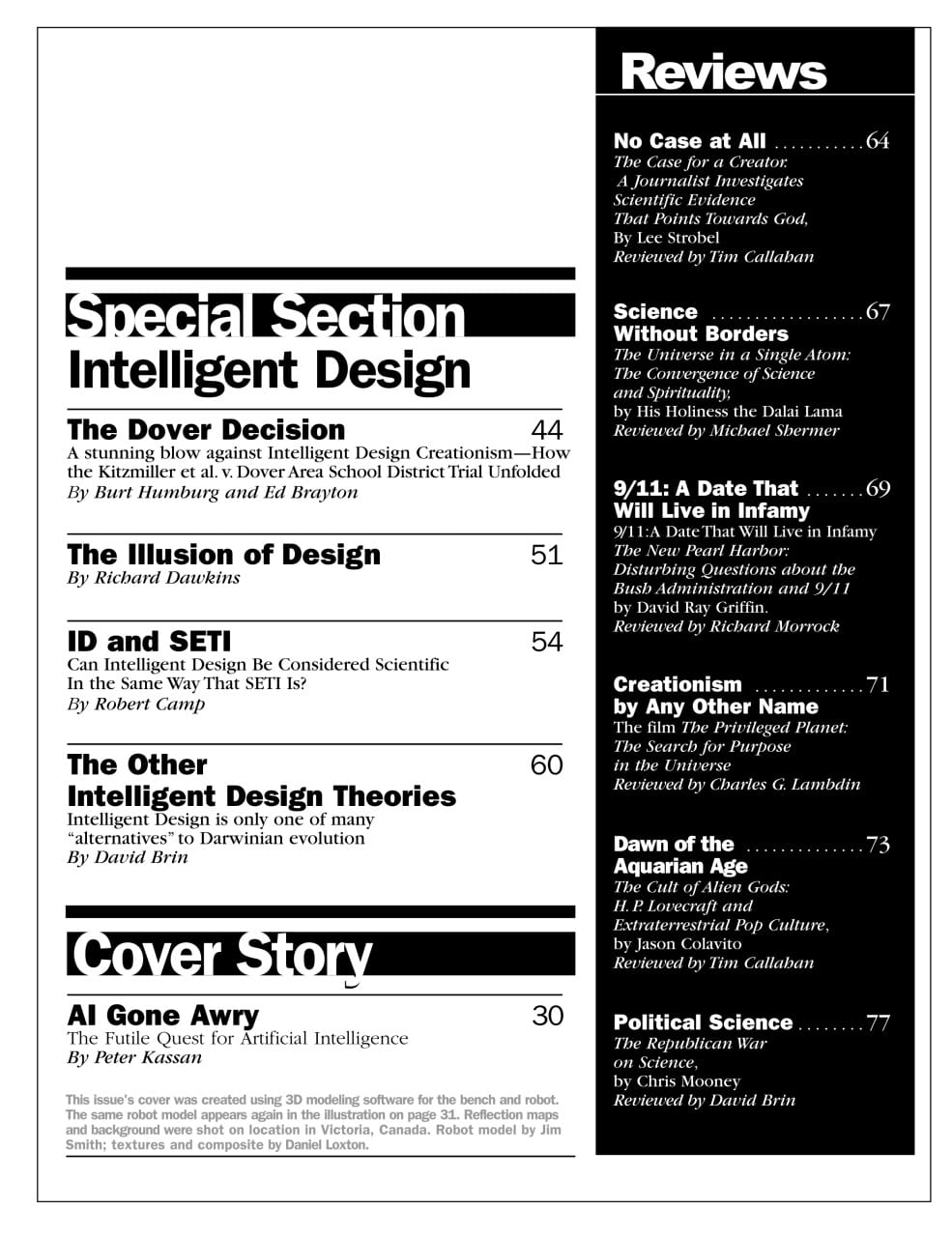ALL ISSUES - Artificial Intelligence
What's Inside
Volume 12 Number 2
- A.I. Gone Awry: The Futile Quest for Artificial Intelligence
by Peter Kassan - The Dover Decision: A Stunning Blow Against Intelligent Design Creationism — How the Kitzmiller et al. versus Dover Area School District Trial Unfolded
by Burt Humburg and Ed Brayton - The Illusion of Design
by Richard Dawkins - ID & SETI: Can Intelligent Design be Considered Scientific in the Same Way that SETI is?
by Robert Camp - The Other Intelligent Design Theories: Intelligent Design is Only One of Many “Alternatives” to Darwinian Evolution
by David Brin - The Enigma of Coral Castle
by William Stansfield - Meeting the Man with the Camera Brain: The Curious Case of Ted Serios
by Calvin Campbell - The Omnitron is Still With Us
by James Randi - Harry Potter & the Goblet of Fear
by Brian Ragle - Young Earth Creationists: Creation Conference in Lynchburg
by Jason Rosenhouse - No Case at All: The Case for a Creator: A Journalist Investigates Scientific Evidence that Points Towards God, by Lee Strobel
reviewed by Tim Callahan - Science Without Borders: The Universe in a Single Atom: The Convergence of Science & Spirituality, by His Holiness the Dalai Lama
reviewed by Michael Shermer - 9/11: A Date That Will Live in Infamy: The New Pearl Harbor: Disturbing Questions about the Bush Administration and 9/11, by David Ray Griffin
reviewed by Richard Morrock - Creationism by Any Other Name: The Privileged Planet: The Search for Purpose in the Universe
reviewed by Charles G. Lambdin - Dawn of the Aquarian Age: The Cult of Alien Gods: H.P. Lovecraft & Extraterrestrial Pop Culture, by Jason Colavito
reviewed by Tim Callahan - Political Science: The Republican War on Science, by Chris Mooney
reviewed by David Brin

Think a friend would enjoy this? Send it their way!
